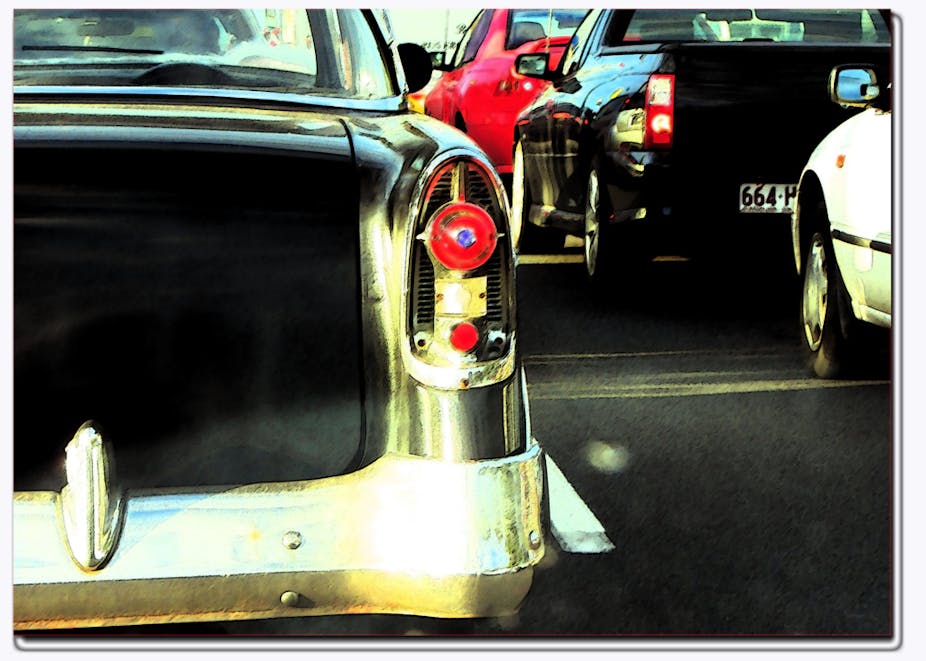In last week’s election, the respective contenders to lead the nation offered contrasting views on the transport future. One opted to promote urban roads and the other, urban passenger rail. We chose roads.
By sticking with roads and high use of private cars, we stay with automobility and unsustainable transport - with its high pollution levels, dependency on oil, high road trauma levels, inequitable access to mobility, and continuing degradation of urban amenity.
If we had opted for rail investment, we would have a chance of sustainable transport and lessening these environmental, social and economic costs.
But ordinary Australians like to drive, right?
Road supporters say that we live in a democracy and car use is what most people want (although how much of democracy we really have might well be questioned in the wake the Senate results). But is this true?
Let’s look at what we do, rather than what we say we want.
Since the mid-2000s, Australians are driving less distance on a per capita basis. Urban rail has grown strongly in recent decades to the extent that operators are struggling to meet (peak hour) demands. Younger people no longer get their driving license as a universal rite of becoming an adult; many are delaying getting their license and a growing cohort seem intent on never doing so.
Inner city living in the major cities has grown greatly, featuring lifestyles without daily car use by choice and preference. And where the cities are growing on the urban fringe, one of the key complaints is the absence of public transport and the resulting reliance on driving which, for those without cars, brings social isolation.
Based on consumer preferences for urban mobility, you can no longer assume the universal primacy of the private car. People want affordable, convenient, efficient, reliable, safe and clean transport options; they don’t care what they are.
It turns out that the community is surprisingly fluid about how they travel and it’s certainly not true that all urban travelers want to drive their cars for every trip. If public transport, walking or cycling meets their needs, then some travelers prefer these to driving.
Many look for options to avoid driving, with its safety risks, congested roads, high costs, and contributions to air pollution. In all likelihood, if there were more opportunities for public transport and active transport, there would be even less driving and the trends to public transport use would be higher.
Yet our incoming government has pledged to take up the cause of road building and exclude urban passenger rail funding, proffering the view that new roads build the economy and ease road congestion.
Such views are not based on evidence. Most of the recent freeway projects in Australia have gone bankrupt (including Airportlink, Clem7, Lane Cove Tunnel, and the Cross City Tunnel). Transport planners abandoned the views that congestion can eased by adding new roads because the new roads attract new motorists (causing a problem known as “induced traffic”) and congestion re-occurs.
Are more roads necessarily bad news for emissions?
Transport remains a headache for any government dealing with climate change and cutting greenhouse gas emissions. Transport was almost 16% of 2011 emissions (excluding those from land use), with 85% of that from road vehicles. Road emissions have been growing 1.7% annually since 1990.
Our current national target is to reduce all emissions to 5% below their year 2000 level by 2020. But transport emissions are currently 18% above their year 2000 levels (and 41% above 1990 levels). Meeting the reduction target in 2020 would mean cutting 23% from the 2011 emissions. In brief, transport emissions are trending up against a target that requires significant reductions.
Incoming environment minister Greg Hunt proposed introducing emission standards for motor vehicles to meet lower emission targets for transport. Could this work? It could help, but would need to meet two seemingly difficult conditions.
Australia would need to adopt strict transport targets, such as those of the European Commission. Currently, we have only voluntary targets and have resisted adopting standards, so moving immediately to strict standards would require a heroic political effort. And future national governments would need to adhere to these targets and ensure on-going regulatory support, since they would be set for 2020 or a similarly distant year.
Furthermore, such standards would apply only to new vehicles. With the ten-year average age of Australia’s registered vehicles, fleet turnover is relatively slow, making fuel efficiency standards a somewhat medium-term solution.
To draw the obvious conclusion, cutting transport emissions is only feasible using a mixture of policy tools and approaches. No single measure, such as vehicle emission standards, will be sufficient.
It seems, however, that there are more motoring enthusiasts in Canberra than just the sole representative of the new Motoring Enthusiasts Party. In assessing the claims being made for road investment, the public would do well to consider the interests of those advancing such views and consider whether these are identical with the national interest.
Prime Minister-elect Tony Abbott wants to be the PM for infrastructure. Unfortunately, the road they’ve elected to take Australia down will make Mr Abbott the PM for transport pollution.

